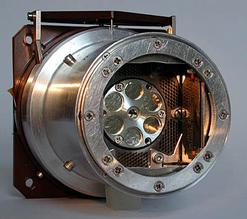Weber State University’s physics department held a seminar Nov. 14 at Tracy Hall Science Center to discuss Utah’s rock composition, its relation to climate change and their new X-ray fluorescence handheld device.
According to the seminar speaker and WSU physics student, James Hurford-Reynolds, Weber State University purchased their own handheld X-ray fluorescence device with the use of grants in August.
X-ray fluorescence is a process that measures the elemental composition of materials.

Prior to receiving the handheld XRF device, Weber State classes that wanted to measure X-ray fluorescence would have to use a large container of liquid nitrogen in a lab to cool the entire subject to 77 kelvins in order to receive the proper information.
Often the elements recorded from this process were heavy metals such as magnesium and uranium. Due to the liquid nitrogen’s destructive nature, Weber State’s experience with XRF was mainly limited to exploring historic climate change from the composition of rocks.
“Another application of this new XRF device is its use in the medical field,” said Hurford-Reynolds. “We’ll look at the amount of lead within shin-bones because that’s is where they typically are deposited over time.”
Hurford-Reynolds also pointed out that the handheld device does not require incisions of the skin or tissue to examine the tibia and is considered a relatively harmless and non-invasive form of XRF.
Elizabeth Sandquist, attendee and assistant professor of zoology at WSU, attended the event because of her fascination with Utah’s rock formations.
“I’ve started to become more interested in learning from those rocks and seeing where they come from,” Sandquist said.
Dr. Sandquist’s said her favorite part of the seminar was the explanation of how the past’s climate, weather and even biology can be learned just from scanning the composition of rocks with XRF technology.
“I didn’t even know that they would be talking about this really cool new device,” said Dr. Sandquist. “I used to do heavy metal research and so I’m definitely interested in seeing how useful of a tool it can be.”
Attendee and WSU physics student Melodie Jensen said she attended the event as part of her undergraduate research, which requires physics students to attend a number of similar seminar-style events.
“I still wanted to come to each one,” said Jensen. “It’s pretty exciting learning about how there is so much more to learn.”







